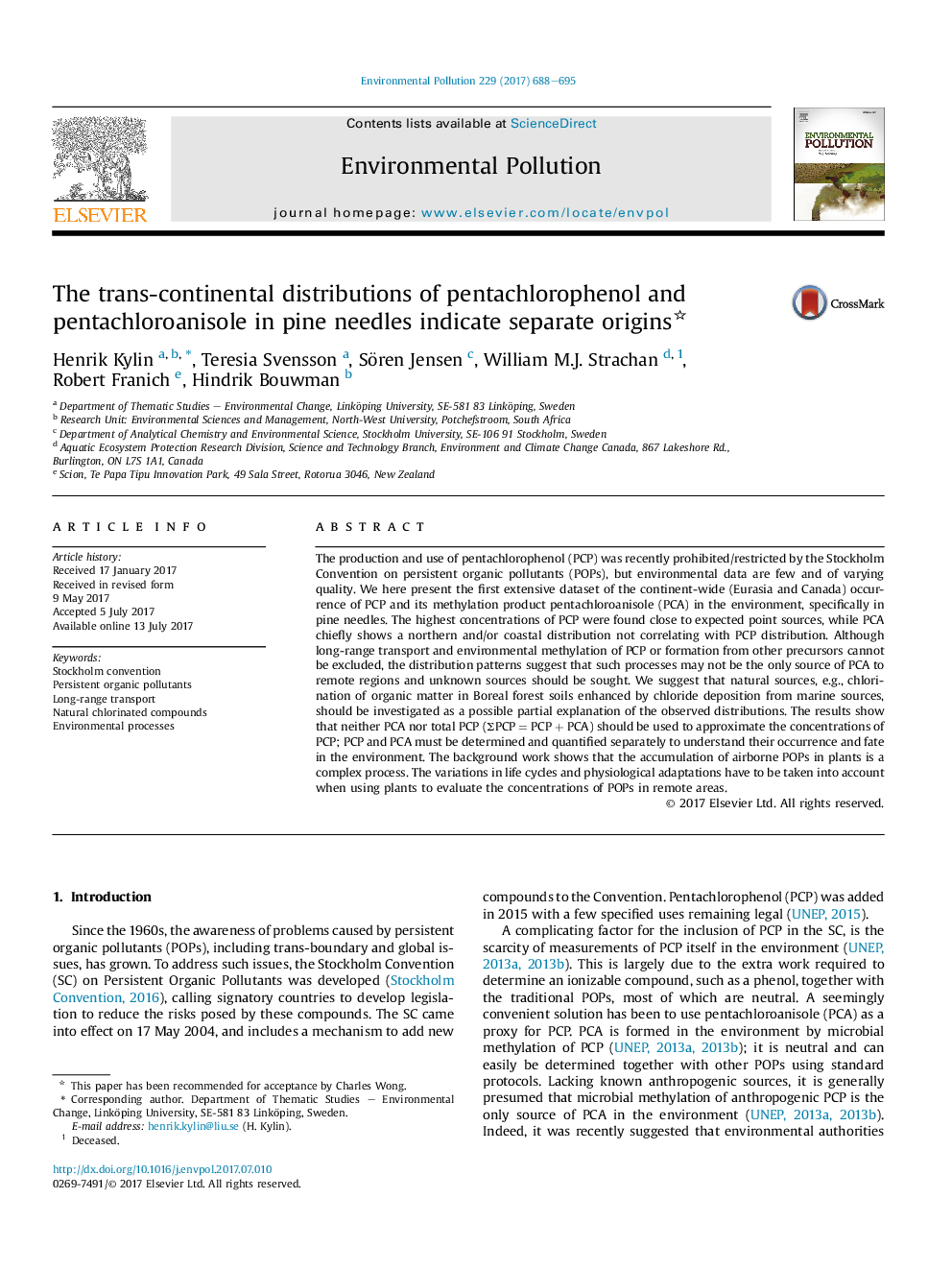| کد مقاله | کد نشریه | سال انتشار | مقاله انگلیسی | نسخه تمام متن |
|---|---|---|---|---|
| 5748816 | 1619144 | 2017 | 8 صفحه PDF | دانلود رایگان |
- Pentachlorophenol (PCP) was recently included in the Stockholm Convention.
- There are few relevant field measurement of PCP and of varying quality.
- Pentachloroanisole (PCA) is not a relevant proxy for PCP in the environment.
- Long-range transport alone cannot explain the distributions of PCP and PCA.
- Natural chlorination of organic matter should be explored as a possible PCA source.
The production and use of pentachlorophenol (PCP) was recently prohibited/restricted by the Stockholm Convention on persistent organic pollutants (POPs), but environmental data are few and of varying quality. We here present the first extensive dataset of the continent-wide (Eurasia and Canada) occurrence of PCP and its methylation product pentachloroanisole (PCA) in the environment, specifically in pine needles. The highest concentrations of PCP were found close to expected point sources, while PCA chiefly shows a northern and/or coastal distribution not correlating with PCP distribution. Although long-range transport and environmental methylation of PCP or formation from other precursors cannot be excluded, the distribution patterns suggest that such processes may not be the only source of PCA to remote regions and unknown sources should be sought. We suggest that natural sources, e.g., chlorination of organic matter in Boreal forest soils enhanced by chloride deposition from marine sources, should be investigated as a possible partial explanation of the observed distributions. The results show that neither PCA nor total PCP (ΣPCP = PCP + PCA) should be used to approximate the concentrations of PCP; PCP and PCA must be determined and quantified separately to understand their occurrence and fate in the environment. The background work shows that the accumulation of airborne POPs in plants is a complex process. The variations in life cycles and physiological adaptations have to be taken into account when using plants to evaluate the concentrations of POPs in remote areas.
161
Journal: Environmental Pollution - Volume 229, October 2017, Pages 688-695
